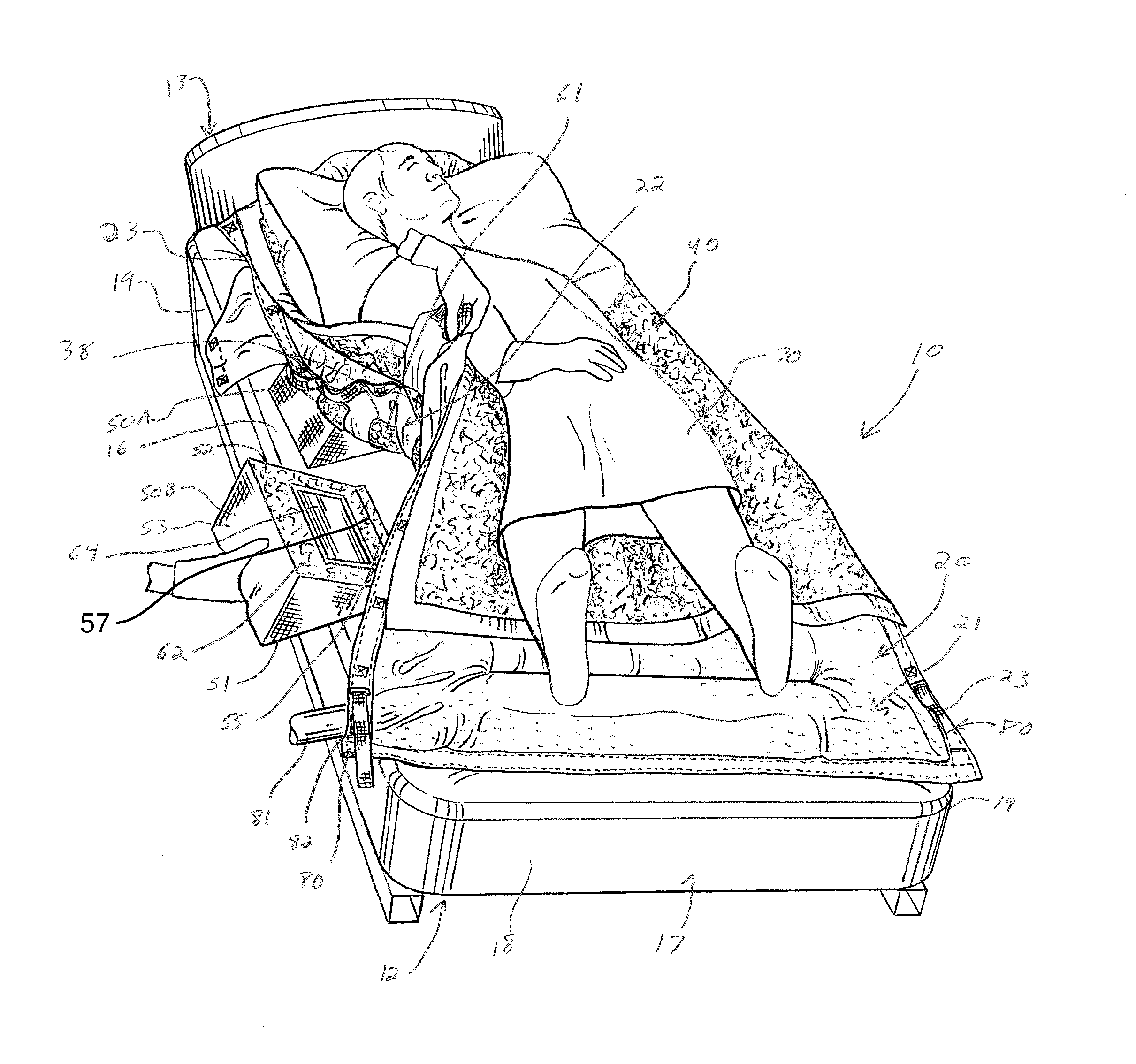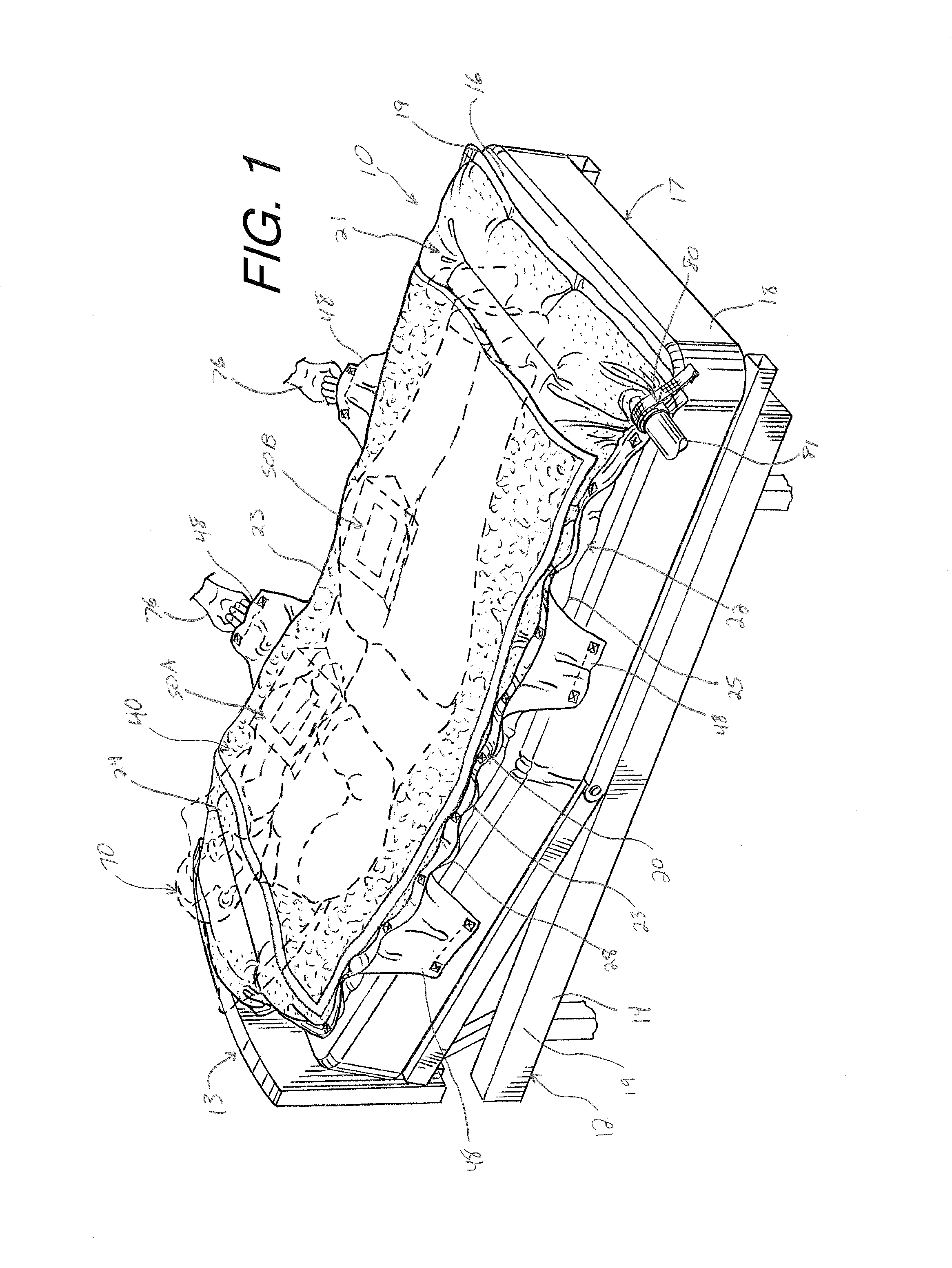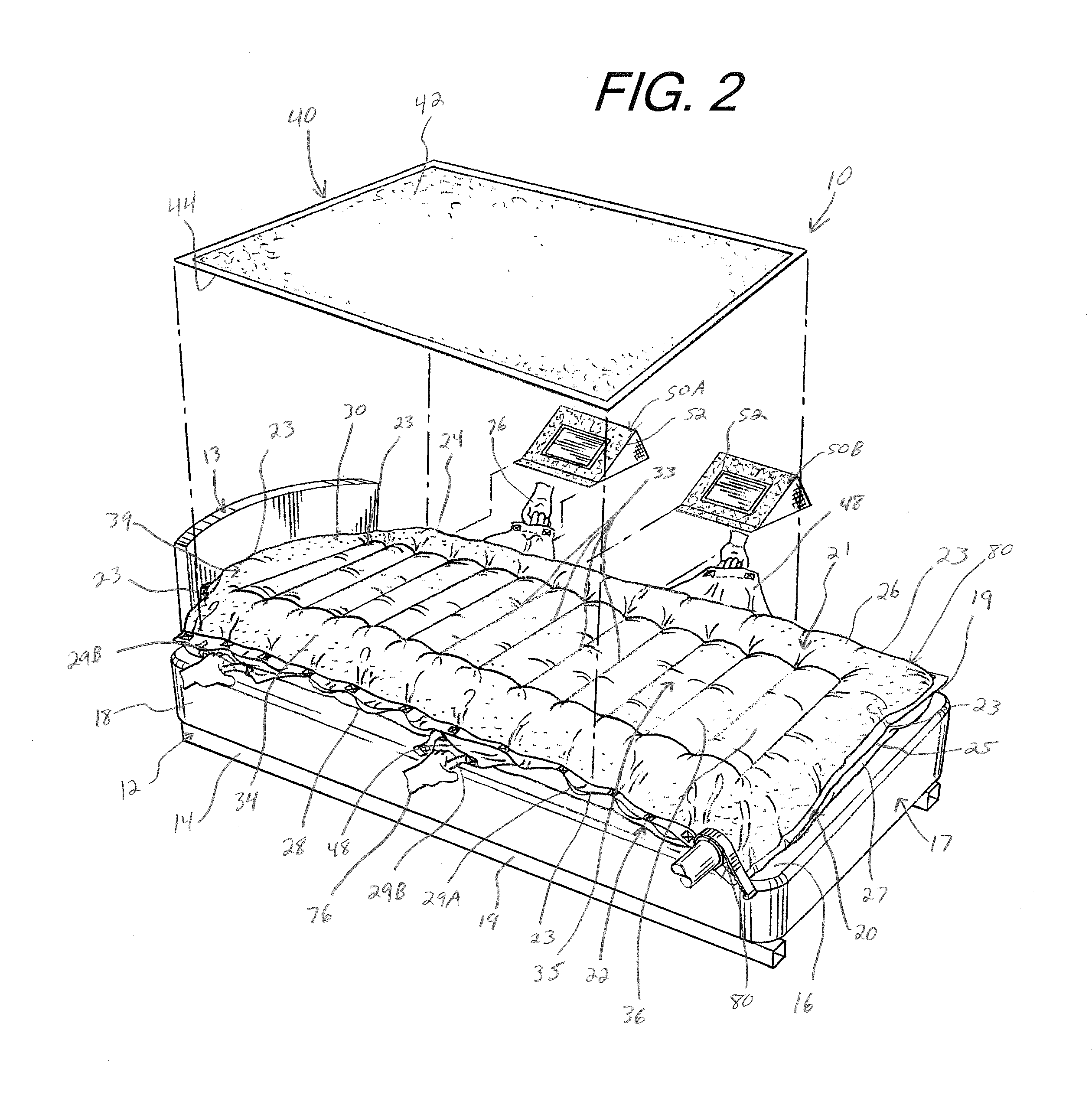Apparatus and System for Boosting, Transferring, Turning and Positioning a Patient
a technology for transferring, positioning, and boosting a patient, which is applied in the direction of mechanical equipment, functional valve types, transportation and packaging, etc., and can solve the problems of skin being more fragile and therefore more susceptible to damage, the risk of pressure ulceration (bed sores), and the risk of tissue death
- Summary
- Abstract
- Description
- Claims
- Application Information
AI Technical Summary
Benefits of technology
Problems solved by technology
Method used
Image
Examples
Embodiment Construction
[0063]While this invention is capable of embodiment in many different forms, there are shown in the drawings, and will herein be described in detail, certain embodiments of the invention with the understanding that the present disclosure is to be considered as an example of the principles of the invention and is not intended to limit the broad aspects of the invention to the embodiments illustrated and described.
[0064]In general, the disclosure relates to a system or apparatus, including an inflatable patient support device, an absorbent body pad configured to be placed over the device, and one or more wedges configured to be placed underneath the device to support the patient in various positions, where the wedge(s) and the device form one or more selective gliding assemblies, as well as systems including one or more of such devices and methods utilizing one or more of such systems and / or devices. Various embodiments of the invention are described below.
[0065]Referring now to the f...
PUM
 Login to View More
Login to View More Abstract
Description
Claims
Application Information
 Login to View More
Login to View More - R&D
- Intellectual Property
- Life Sciences
- Materials
- Tech Scout
- Unparalleled Data Quality
- Higher Quality Content
- 60% Fewer Hallucinations
Browse by: Latest US Patents, China's latest patents, Technical Efficacy Thesaurus, Application Domain, Technology Topic, Popular Technical Reports.
© 2025 PatSnap. All rights reserved.Legal|Privacy policy|Modern Slavery Act Transparency Statement|Sitemap|About US| Contact US: help@patsnap.com



